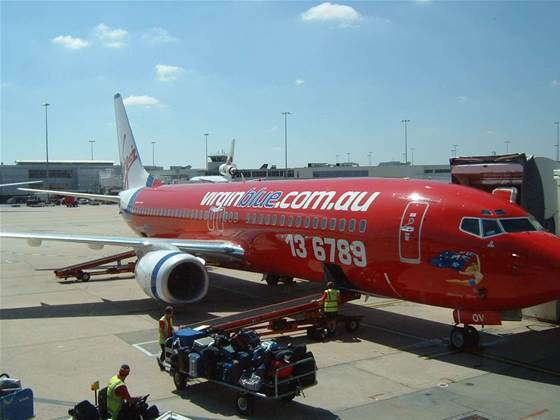Virgin Australia’s in-house technology team is set to grow from 200 to 350 in the coming months as it implements a single ticketing and reservation system for the newly merged airline.

The airline formed when domestic carrier Virgin Blue absorbed its international sister airline, V Australia, last December.
By March 2013, Virgin Australia will adopt the cloud-based SabreSonic reservation system, replacing Navitaire’s New Skies platform at Virgin Blue and Amadeus' Altea at V Australia.
Virgin Australia’s manager of strategy and solutions Martin Campbell described the “Unify Program” as a significant challenge for IT and the business.
The airline plans to consume SabreSonic as a service, without customisation, and integrate it with its data warehouse, operations and financial systems.
In addition, SabreSonic is a ticket-issuing platform targeting business travellers while Navitaire’s New Skies is ticketless, so Virgin will establish a new, more robust data warehouse to support new requirements.
Speaking with iTnews at the CIO Strategy Summit in Melbourne last week, Campbell said technology work for the Unify Program would be shared between 100 in-house staff and an integration partner with SabreSonic experience.
Virgin is currently determining how exactly work will be split; however, Campbell said permanent, in-house staff would be associated with all parts of the program to ensure that knowledge remains with the business.
“Like every other organisation, we’ve gone through our offshore partnering exercises and like everyone else, we’ve learned the falsehoods in the economic model,” he said.
“In this case, we don’t feel that we’re just outsourcing the work; we definitely feel that we’re insourcing some capability and expertise.”
Prior to the merger, IT at Virgin Blue and V Australia was managed by two “support units” in a combined information systems (IS) team of 200.
Campbell said the team would grow “significantly” during the Unify Program, with Virgin recruiting temporary workers to fill in for any employees tasked with integration work.
“We might grow to 350 people at the height of the program, then we’ll shrink back down to probably about the same size of 200 people,” he said.
Last April, Virgin Blue and Navitaire settled a legal dispute over a hardware failure blamed for the cancellation of at least 116 flights in September 2010.
A Virgin Australia spokesman told iTnews that its selection of Sabre came after a rigorous due diligence process, and was unrelated to the Navitaire lawsuit.
“Navitaire is a leading provider for ticketless operations, but does not service ticketed requirements,” he said.
“There are many practices across our business which have been effective in our success to date as a low-cost domestic carrier.
“To become a virtual global airline and provide seamless first-rate travel experiences for our guests, however, we need to modify those to support integrated ticketing with our alliance partners, remove inefficient workarounds currently endured by our team and provide an elevated level of recognition for our guests.
“The integration of business practices, supported by integrated technology solutions, will provide a consistent foundation for our new ticketed operating model across the Virgin Australia Group.”
Business architecture
Virgin will change its processes to fit an off-the-shelf version of SabreSonic, and has already kicked off education and change management programs for its staff.
In November, Campbell, who manages information, application and infrastructure architecture within the IS team, established a new “business architecture” team to document and support the move.
The new team is composed of an experienced business architect who was recruited from NAB, two IS architects and a business analyst who is shared with the business analysis team.
It is supported by a wider team of three client service IS managers, each with ten to 15 reports.
Campbell said the business architecture team currently is “absolutely focused on what Virgin Australia looks like after deploying SabreSonic”, documenting as-is and will-be practices to understand how the business will change.
Although the team was established by technologists, Campbell hoped it would move to the business side of Virgin Australia, eventually sitting within the office of the CEO.
Besides supporting the Unify Program, the business architects are also developing Virgin Australia’s disruption management framework – processes to deal with flight schedule changes.
Campbell hoped that the team would have proved enough of its worth to be moved under the office of the CEO by mid-year.
“We know that we haven’t got a long time to get the practice up and running so we’re not taking a boil the ocean approach; we’ve selected a couple of programs and capabilities for business architecture to establish itself in,” he said.
“Business architecture does not belong in technology – it belongs somewhere else … It’s a business program, not an IT program.”


.png&h=140&w=231&c=1&s=0)


_(20).jpg&h=140&w=231&c=1&s=0)



_(26).jpg&w=100&c=1&s=0)

 iTnews Executive Retreat - Security Leaders Edition
iTnews Executive Retreat - Security Leaders Edition












_(1).jpg&h=140&w=231&c=1&s=0)



